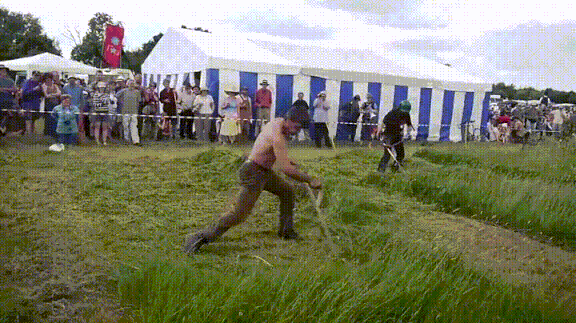Taking care of your lawn is hard work, but the sight of a beautiful, green lawn is a great pay-off. With all the hard work people world over put into tending to lawns, you’ll get a number of mind-blowing facts.
Here are some great ones!
- There are more than 12,000 species of grass, but you wouldn’t recognize each one as making for great turf – your typical lawn shares the same family as wheat, rice, and even bamboo!
- You especially wouldn’t want to use bamboo in your yard. It can grow 95 centimeters a day, making it the fastest growing plant in the world. It can get up to 151 feet tall! We’re pretty sure a panda would be the most expensive lawn mower in the world, too.
- Well, maybe. Should you need to cut a large property in no time at all, the German Claas Cougar is largest lawn mower in the world. It has a cutting span of 14 meters (46 feet) and can cut 220,000 square meters an hour! You could probably mow your own home down without feeling it.

- The largest crop in the United States? It isn’t corn or wheat – it’s turf grass, and it covers three times more space than any other irrigated crop. Add all the lawns together, and you get an area the size of Texas.
- Even though all you’re seeing is the stalk ( like an iceberg) most of what’s going on is beneath the surface. Roots make up 90% of grass weight, and the structure is more complicated than you’d expect. Blades grow off of an extensive root structure. How you water it can determine how deep the root goes and how strong it is.
- The lawn mower was invented in 1830. Prior to this, the wealthy had their lawns scythed by hand. Considering that the existence of turfgrass lawns goes all the way back to the 1100s, you can imagine the pain that caused! These lawns were both ornamental and recreational.

- A lot of resources might go in to tending to your lawn, but it has more than just aesthetic benefits: according to the Lawn Institute (the highest authority on lawns), “on a block of eight average homes, front lawns have the cooling effect of 70 tons of air conditioning.” That’s a lot of saved energy!
Please follow and like us:


Recent Comments